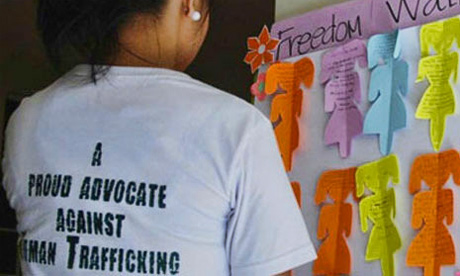The Philippines has failed to fully comply with the minimum standards to eliminate human trafficking and continues to be a venue for child sex tourism.
In not complying, the Philippines remains in Tier 2 of the United States’ Global Trafficking in Persons’ report, a situation that Philippines Justice Secretary Leila de Lima described as “a glass half full.”
The Philippines has been in the Tier 2 group since 2001, and in 2004, 2005, 2009 and 2010 was put on the ‘watch list’.
“The Tier 2 status officially recognises a country’s significant efforts to adhere to benchmarks prescribed by the US State Department and [to] meet the minimum standards,” De Lima said.
Despite the Tier 2 rating, the US recognised the country’s progress in cracking down on human trafficking, said De Lima, who heads the Inter-Agency Council Against Trafficking.
Tier 1 countries are fully compliant with the minimum standards of the Trafficking Victims Protection Act.
In the 2012 edition of the Global Trafficking in Persons report, the US State Department says that human trafficking in the country persists, with people from the provinces being trafficked in urban areas for forced labor and exploitation in the commercial sex industry.
Filipino migrants workers topped the list of victims of “violence, threats, inhuman living conditions, non-payment of salaries, and withholding of travel and identity documents,” the report says.
The US State Department report also highlighted the continued problem of tourists who come to the country for sex with children.
“Child sex tourism remained a serious problem in the Philippines, with sex tourists coming from Northeast Asia, Australia, New Zealand, Europe and North America to engage in the commercial sexual exploitation of children,” the report says.
“Increasingly, Filipino children are coerced to perform sex acts for Internet broadcast to paying foreign viewers.”
Child sex tourism aside, the report also saw an increasing incidence of children in conflict-stricken areas being used as soldiers by rebel groups.
Source
- ucanews (Story and image)
